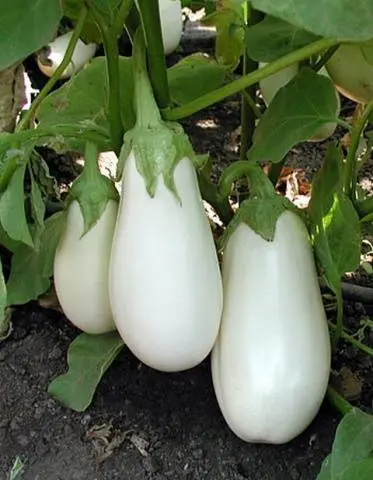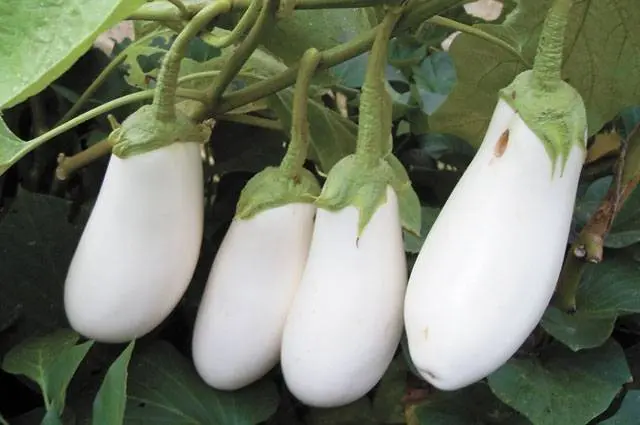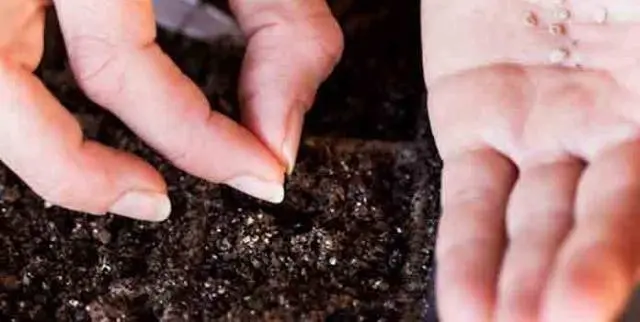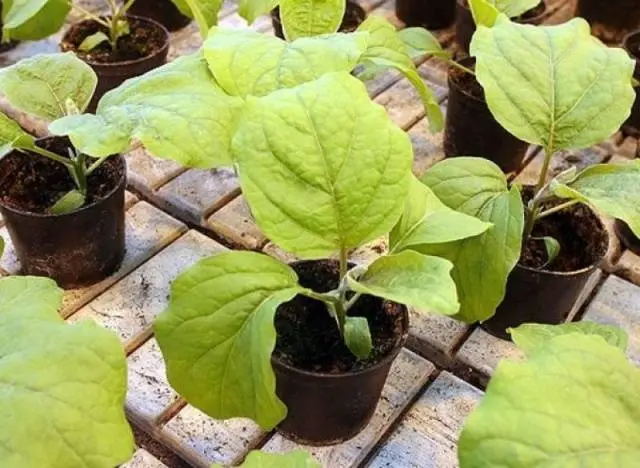In modern summer cottages and household plots, eggplant has long been no longer a youth-guest, but a real long-lived owner. Increasingly, gardeners prefer growing this particular vegetable rich in useful properties. This article will focus on the representative of the white variety of eggplant “Swan”.

Description
Eggplant “Swan” in terms of fruit ripening is a mid-season variety. The period of full ripening of fruits from the moment the first shoots appear is 105-116 days. The bushes are compact, of medium size, reach a height of 50-70 cm. The variety is suitable for growing both in a greenhouse and in open ground.
The fruits have a cylindrical, slightly elongated shape. In the period of technical maturity they are painted white. The size of one vegetable is 18-20 cm long and 5-7 cm in diameter. The weight of one single mature fruit ranges from 200 to 250 grams.
The flesh of the eggplant variety “Swan” is snow-white, tender, completely without bitterness. It is this property that makes the variety popular among a large number of gardeners.
The yield of this type of eggplant is high. From one square meter of beds, you can collect up to 18 kg of vegetables.
In cooking, the variety is very popular as a raw material for the preparation of caviar, pickles and second courses.

Advantages of the variety
Among the key benefits of eggplant “Swan” it should be noted:
- high productivity;
- excellent tolerance to temperature extremes and the main “whims of nature”;
- good resistance to a wide range of eggplant-specific diseases;
- excellent taste and commercial qualities;
- wide application in cooking.

Regular consumption of such eggplant in food helps prevent headaches, improves digestion and saturates the body with vitamins and minerals.
Cultivation and care
The process of growing and caring for the plant is no different from the reproduction of the traditional purple variety. The main procedures are as follows:
- Sowing seeds for seedlings.
- Picking grown plants.
- Planting seedlings in a garden bed or greenhouse.
- Watering, weeding, loosening, top dressing and pinching the bush.
- Harvesting.

Sowing seeds for seedlings produced in mid-March.
Under favorable climatic conditions, eggplant seedlings can be planted in the ground from mid-May until the end of the first decade of June.

When and how to properly harvest eggplant for the first time, you will learn from the video:









